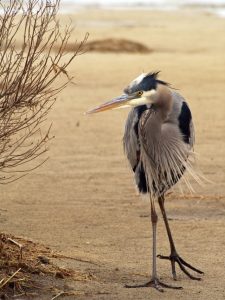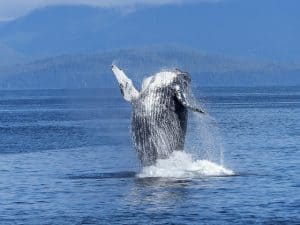
Zebras in Tanzania
Zebras are several species of African equids united by their distinctive black and white striped coats. Their stripes come in different patterns, unique to each individual. They are generally social […]
Zebras are several species of African equids united by their distinctive black and white striped coats. Their stripes come in different patterns, unique to each individual. They are generally social animals that live in small harems to large herds. Unlike their closest relatives the horses and donkeys, zebras have never been truly domesticated.
There are three species of zebras: the plains zebra, the Grévy’s zebra and the mountain zebra. The plains zebra and the mountain zebra belong to the subgenus Hippotigris, but Grévy’s zebra is the sole species of subgenus Dolichohippus. The latter resembles an ass, to which it is closely related, while the former two are more horse-like. All three belong to the genus Equus, along with other living equids.
The unique stripes of zebras make them one of the animals most familiar to people. They occur in a variety of habitats, such as grasslands, savannas, woodlands, thorny scrublands, mountains, and coastal hills. However, various anthropogenic factors have had a severe impact on zebra populations, in particular hunting for skins and habitat destruction.
Everytime I look at a zebra, I can’t figure out whether it’s black with white stripes or white with black stripes, and that frustrates me.

Jodi Picoult
Grévy’s zebra and the mountain zebra are endangered. While plains zebras are much more plentiful, one subspecies, the quagga, became extinct in the late 19th century – though there is currently a plan, called the Quagga Project, that aims to breed zebras that are phenotypically similar to the quagga in a process called breeding back.
The name “zebra” in English dates back to c. 1600, from Italian zebra, perhaps from Portuguese, which in turn is said to be Congolese. The Encarta Dictionary says its ultimate origin is uncertain, but perhaps it may come from Latin equiferus meaning “wild horse”; from equus and ferus .
The word was traditionally pronounced with a long initial vowel, but over the course of the 20th century, the pronunciation with the short initial vowel became the usual one in the UK and Commonwealth. The pronunciation with a long initial vowel remains standard in the United States.
The plains zebra (Equus quagga, formerly Equus burchelli) is the most common, and has or had about six subspecies distributed across much of southern and eastern Africa. It, or particular subspecies of it, have also been known as the common zebra, the dauw, Burchell’s zebra, Chapman’s zebra, Wahlberg’s zebra, Selous’ zebra, Grant’s zebra, Boehm’s zebra and the quagga.








 “Angels are a light for monks, monks are a light for laymen”. The Orthodox Church measures its health by the quality of its monks and nuns. Orthodox monastics separate themselves from the world in order to pray unceasingly for the world. They do not, in general, have as their primary purpose the running of social services, as is common in Western Christianity,[citation needed] but instead are concerned with attaining theosis, or union with God.
“Angels are a light for monks, monks are a light for laymen”. The Orthodox Church measures its health by the quality of its monks and nuns. Orthodox monastics separate themselves from the world in order to pray unceasingly for the world. They do not, in general, have as their primary purpose the running of social services, as is common in Western Christianity,[citation needed] but instead are concerned with attaining theosis, or union with God.



 Birds have wings which are more or less developed depending on the species; the only known groups without wings are the extinct moas and elephant birds. Wings, which evolved from forelimbs, give most birds the ability to fly, although further speciation has led to some flightless birds, including ratites, penguins, and diverse endemic island species of birds. The digestive and respiratory systems of birds are also uniquely adapted for flight. Some bird species of aquatic environments, particularly the aforementioned flightless penguins, and also members of the duck family, have also evolved for swimming. Birds, specifically Darwin’s finches, played an important part in the inception of Darwin’s theory of evolution by natural selection.
Birds have wings which are more or less developed depending on the species; the only known groups without wings are the extinct moas and elephant birds. Wings, which evolved from forelimbs, give most birds the ability to fly, although further speciation has led to some flightless birds, including ratites, penguins, and diverse endemic island species of birds. The digestive and respiratory systems of birds are also uniquely adapted for flight. Some bird species of aquatic environments, particularly the aforementioned flightless penguins, and also members of the duck family, have also evolved for swimming. Birds, specifically Darwin’s finches, played an important part in the inception of Darwin’s theory of evolution by natural selection.



 For solid objects like human bones and muscles, this added pressure is not much of a problem; but it is a problem for any air-filled spaces like the mouth, ears, paranasal sinuses and lungs. This is because the air in those spaces reduces in volume when under pressure and so does not provide those spaces with support from the higher outside pressure. Even at a depth of 8 ft underwater, an inability to equalize air pressure in the middle ear with outside water pressure can cause pain, and the tympanic membrane can rupture at depths under 10 ft (3 m).
For solid objects like human bones and muscles, this added pressure is not much of a problem; but it is a problem for any air-filled spaces like the mouth, ears, paranasal sinuses and lungs. This is because the air in those spaces reduces in volume when under pressure and so does not provide those spaces with support from the higher outside pressure. Even at a depth of 8 ft underwater, an inability to equalize air pressure in the middle ear with outside water pressure can cause pain, and the tympanic membrane can rupture at depths under 10 ft (3 m).








